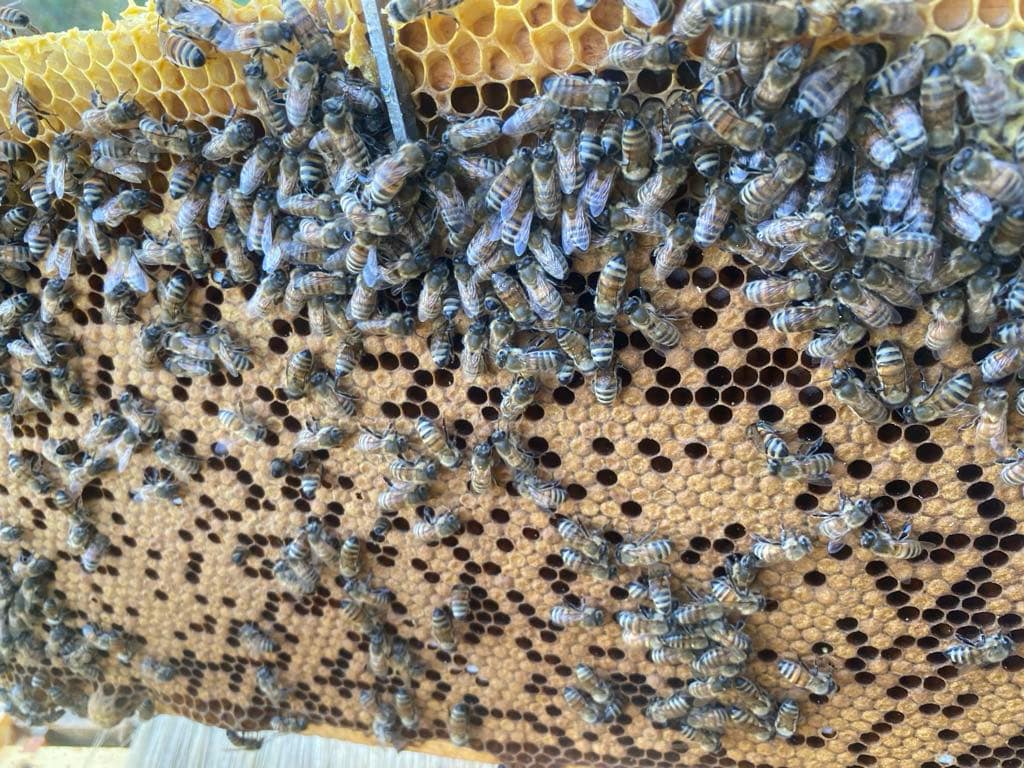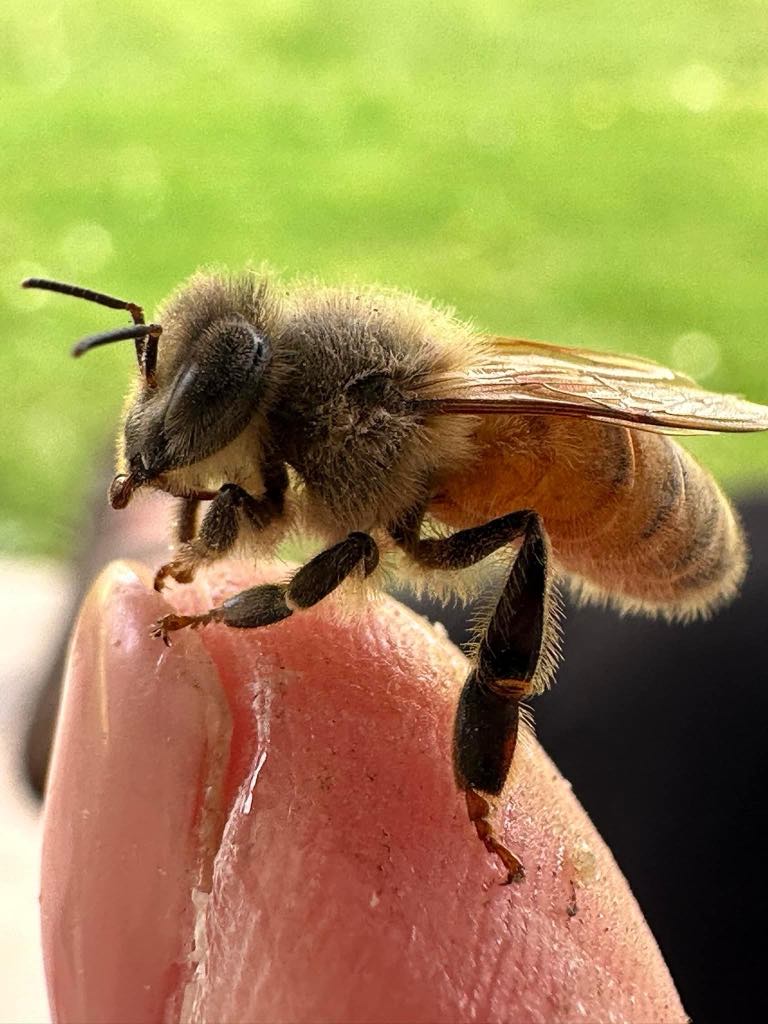
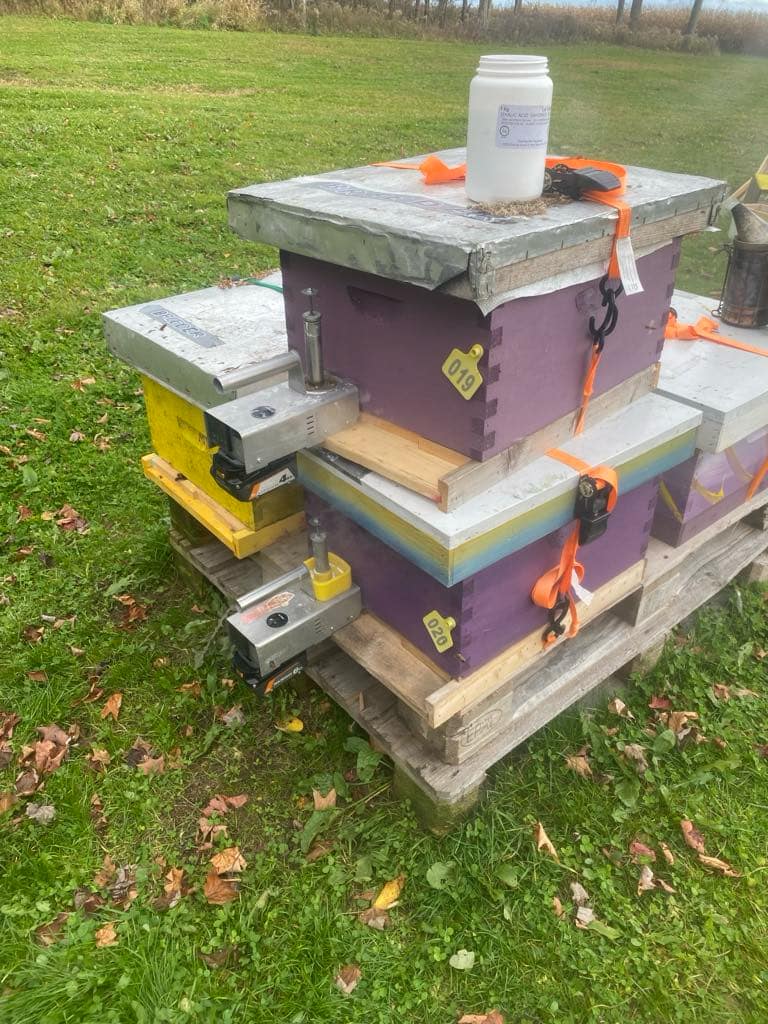
This is part #2 of the Varroa Mite Biology Article. React part #1 Here – Click.
What is a Mite Load?
Phoretic vs. True Mite Load
Phoretic mites are those living on adult bees, outside the capped brood cells. This is the second stage of their life, where they feed on adult bees. The Phoretic Mite Load is what you will count from a sugar roll or alcohol wash.
Varroa destructor do their breeding inside capped brood cells, so a significant percentage of their total population cannot be counted using the typical mite tests.

This problem is compounded during swarm season (or more important, when bees are swarming in your area, and this year.)
The True Mite Load attempts to calculate these mites. The data available for these hidden mites is difficult to apply across hives. But I needed to start somewhere. What I did learn is that by the time I see varroa in the hive, at least 2 generations have hatched and the damage is already done.
Varroa Treatment Data vs Date
I am a believer in data. We tried using dates in the past. There are so many other factors, weather, pollen and flows, temperature, strength of hive, and other unknown factors that can change the dates.
In 2023 we realized that dates do not work in our area. We treated our hives at the end of July with Fromic Pro. We did a mite check before the treatment and had high levels of mites. The treatment worked. The mites were knocked down, but not knocked out. We learned then what they mean when people say ‘The damage is done.’
We talked to a lot of people, and did more research. If we had studied Varroa Mite Biology, and the varroa mite cycle, we would have been testing more often. In the end we realized we were 3 weeks too late when treating.
2024 Season Revelations
In 2024, we used data, and treated based on the mite cycle, and went into this October with about 50% of our hives with 10 frames of bees, 60-90% covered in bees. Another 30% of the hives had 6-7 frames, 50-90% covered in bees.
In November when we wrapped the bees, only about 10-15% of 110 hives were what we considered weak.
One thing we did different this year was manually testing the drone comb. At first I thought we were doing awesome with zero, or almost zero mites.
Then I realized that varroa mites move fast. They will be abandoning the cell almost as soon as it is opened, and sometimes they are moving so fast that you have to guess whether you saw movement or not.
Testing for Varroa Mite
We were shy about testing for varroa mite because we didn’t want to kill bees, and were worried about getting the queen. It is heartbreaking for beekeepers to kill 300 nurse bees. Even now, John doesn’t like doing mite counts.
I had a change of heart when I watched a video where Randy Oliver stated that he doesn’t understand why beekeepers will not sacrifice 300 bees to save the whole hive of bees. It made sense.
I have looked at a lot of different testing methods, Co2, powdered sugar, alcohol, sticky sheets. Nothing has proven to work as well as alcohol washes.
Another way is just to avoid testing and treat on a regular basis. This is another thing that I learned from Randy Oliveras of Scientific Beekeeping. He treats year-round. We know several local beekeepers that treat with oxalic acid vaporizers every 4 days.
This method is controversial. Some professionals state that treating every 4 days ignores the varroa mite life cycle. Others, state that you need to treat every 4 days to kill the mites as soon as they come out of the cell.
Learn More:
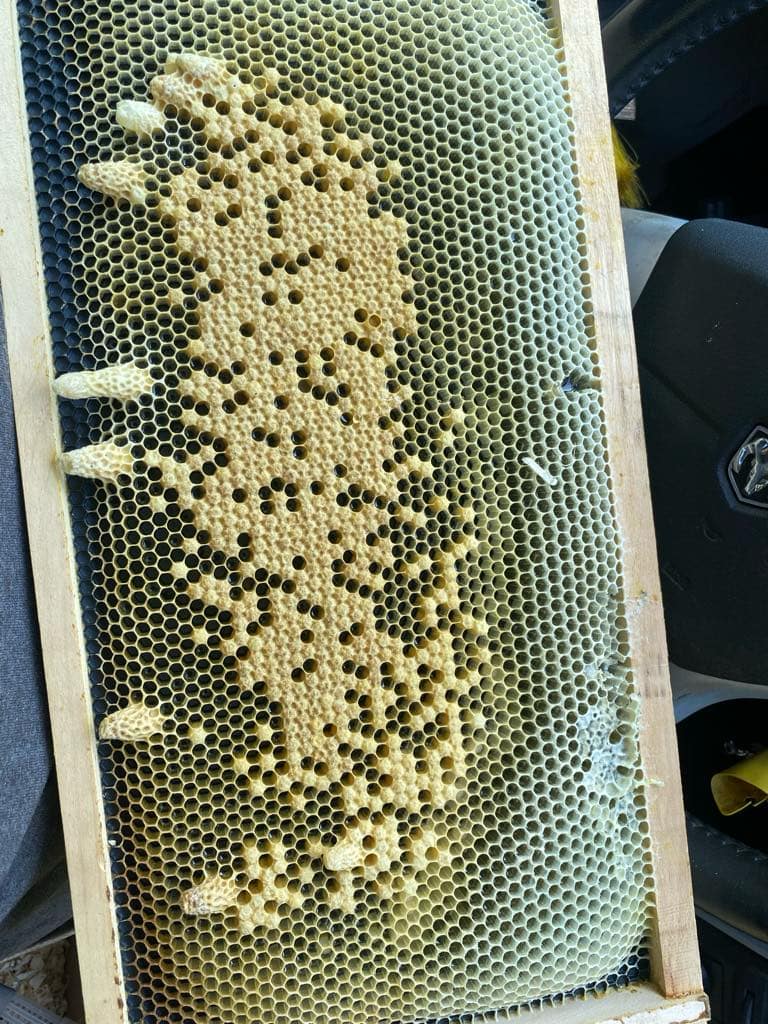
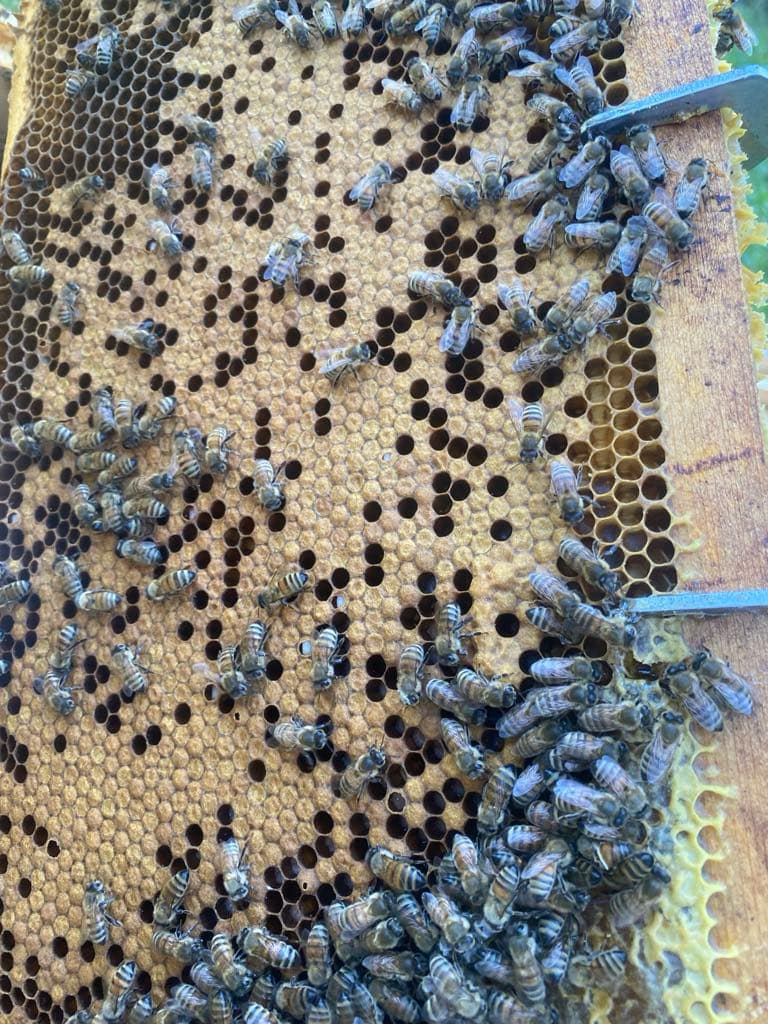
Do Varroa Mite Treatments Work?
The important thing is to test after treatment. Not all treatments work all the time. We treated with Apivar this fall and didn’t see any drop in mites after 3 weeks.
We have treated with Formic Pro in August, and by September 15 the mite count was above 7 per.
The answer to this question is yes, and no. We tried hard, over 10 years to develop a sustainable method of keeping bees without treating, constantly splitting, or micromanaging the hives.
“The only sustainable way to keep bees treatment free is to buy new bees each year,” John Wiebe.
While we are still working towards our goal, we now use ‘natural’ based treatments like oxacylic acid, and Formic. We still split, use brood breaks, and keep hives in double nucs.
What we have learned:
- The size of comb doesn’t affect varroa reproduction. We had comb 5 years old, and we saw no change in varroa mite populations.
- Hygienic bees can have heavy mite loads.
- Brood Breaks will stop reproduction but does not kill the varroa mites. They can overwinter with the bees. Note: There is some evidence that higher CO2 levels in the condensing hives in, winter may, reduce mites. This might also be true in hives with higher humidity levels.
- Weaker hives can overwinter in a wrapped nuc hives. The question is, what is weaker as feral hives overwinter with much smaller colony sizes.
- Are we treating at the right time if we are only treating the Stage 2 mites? Are we even getting a clear picture of the actual population? Should we focus more on mite prevention than honey production? Is it better to remove honey and treat with formic acid, or another miticide.
Do Varroa Mites Kill Honeybees?
Yes, and no.
Mites bite honeybees. But the viruses and bacteria passed on can decimate a hive. So the question is, did the mites kill the hive. Did the viruses kill the hive? Did the bacterial infection kill the hive? Or, was it another factor, including:
- Loss of coordinated social behavior.
- Malformed bees with distorted abdomens
- Deformed wings from deformed wing virus.
- Deformed or missing legs
- Increased susceptibility to chemical exposure.
- Irregular brood patterns
- Dead brood in perforated or uncapped cells
- Supersedure of queens
- Spotty brood
(this is a global list and each issue may not be evident in every growing zone of North America.)
Click the following links to learn more:
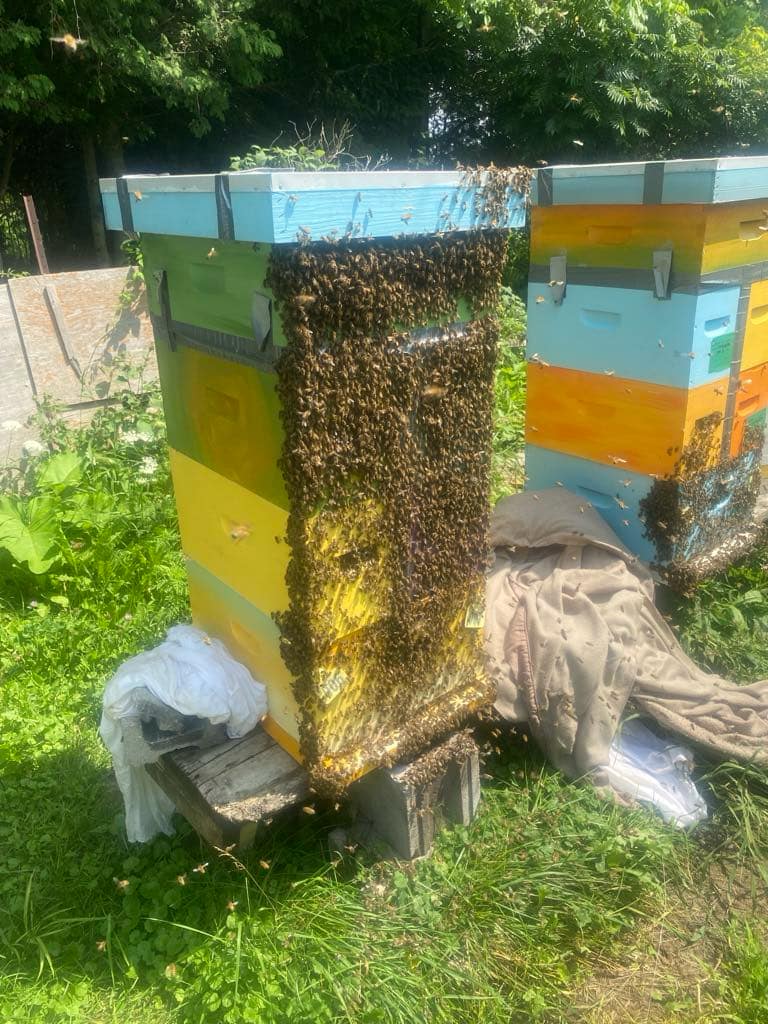
Read More:
Post tags :
Share :
Latest Post

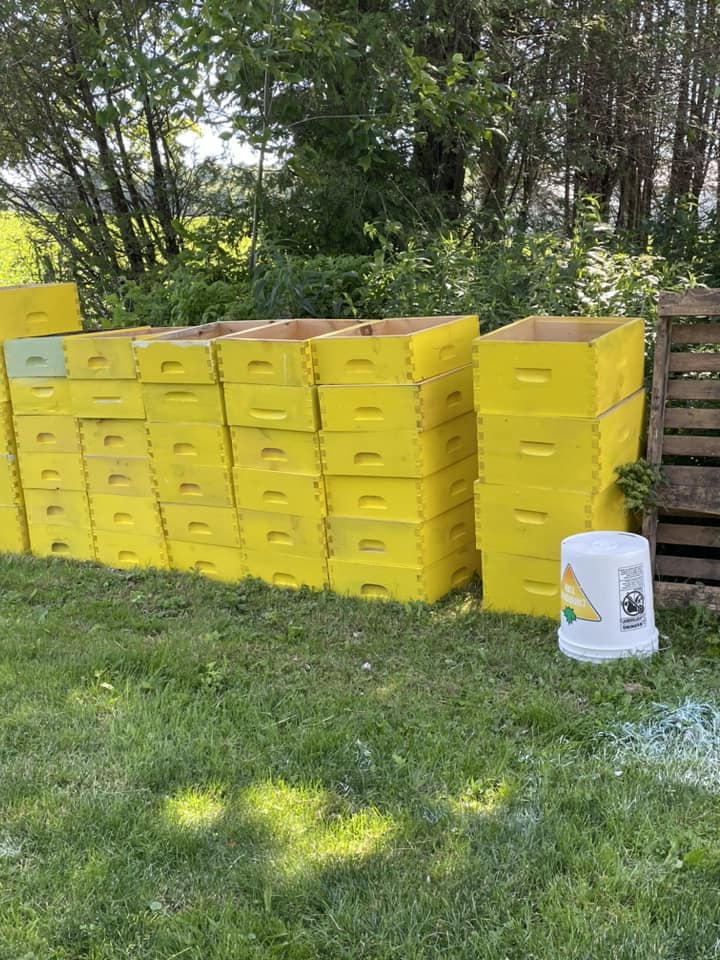
The Investment in Bees – Time and Money
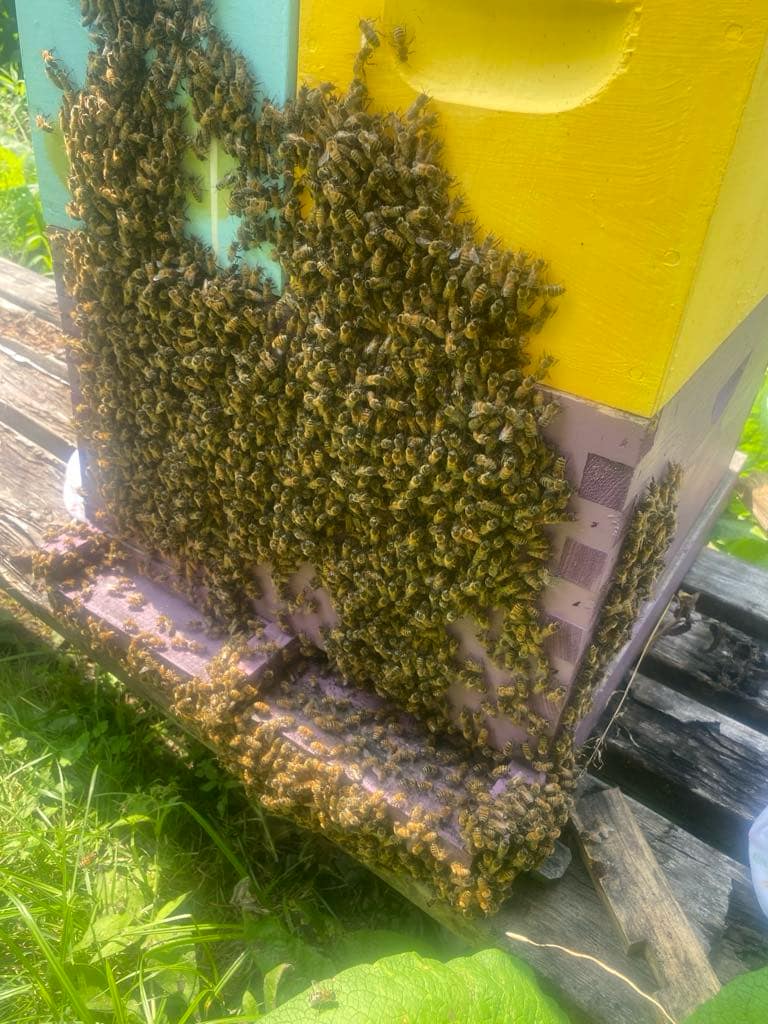
How to Test for Varroa Destructor Mite
